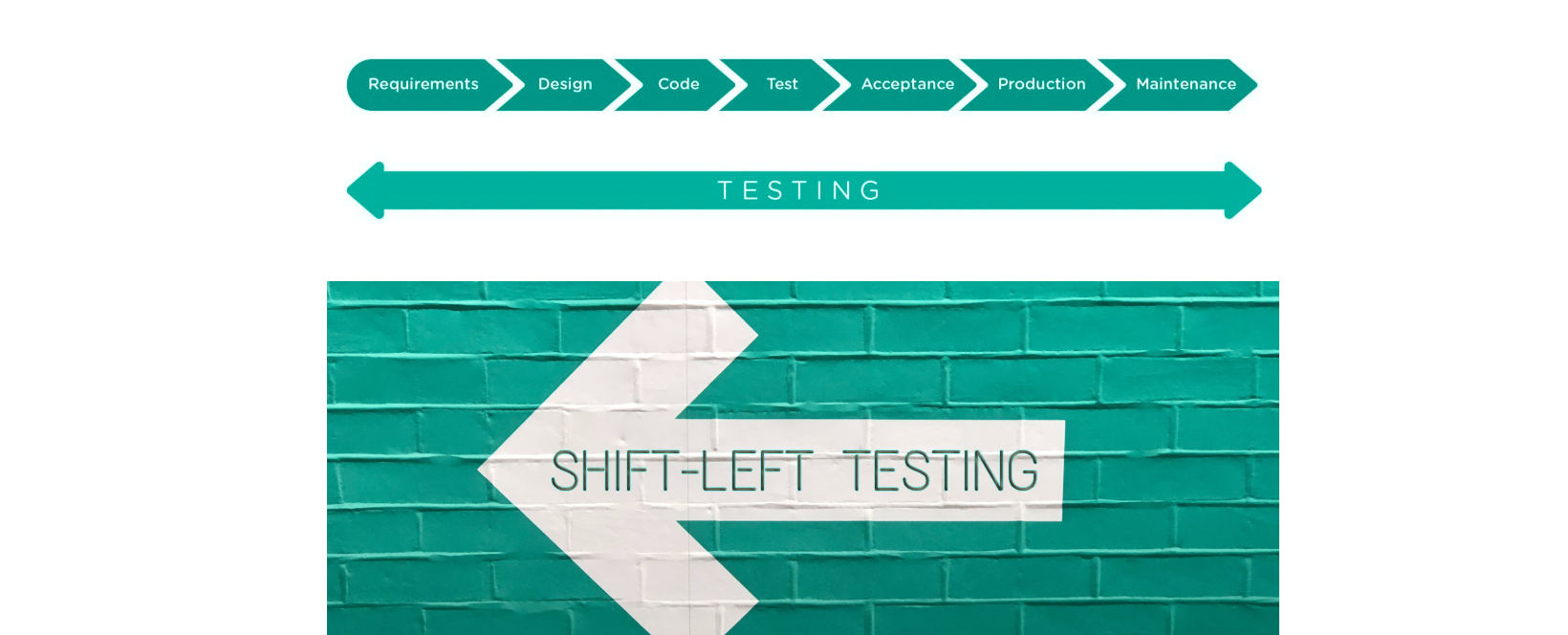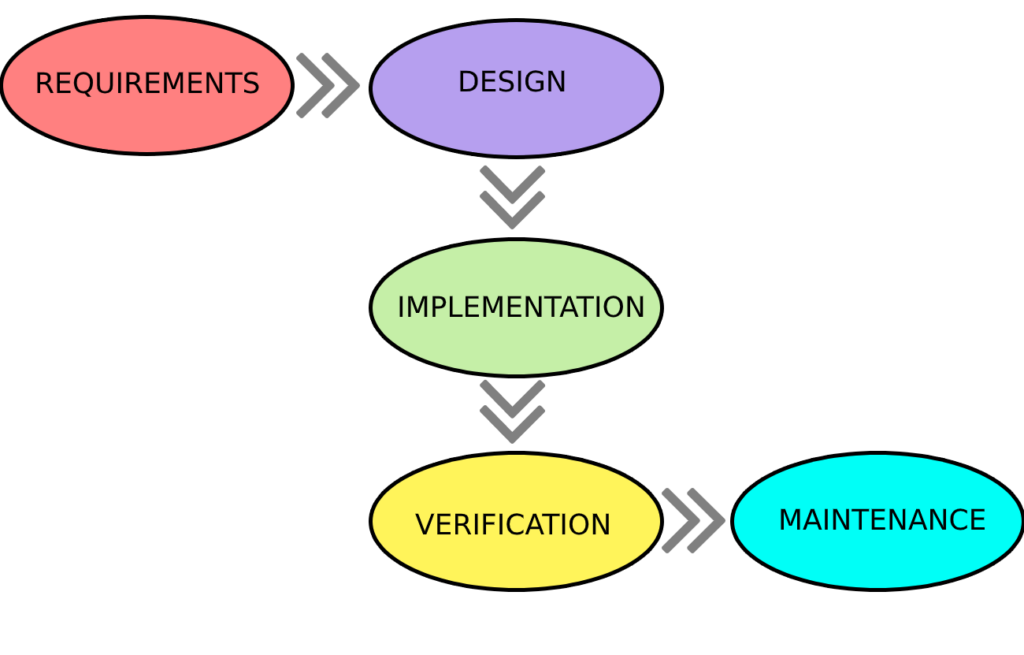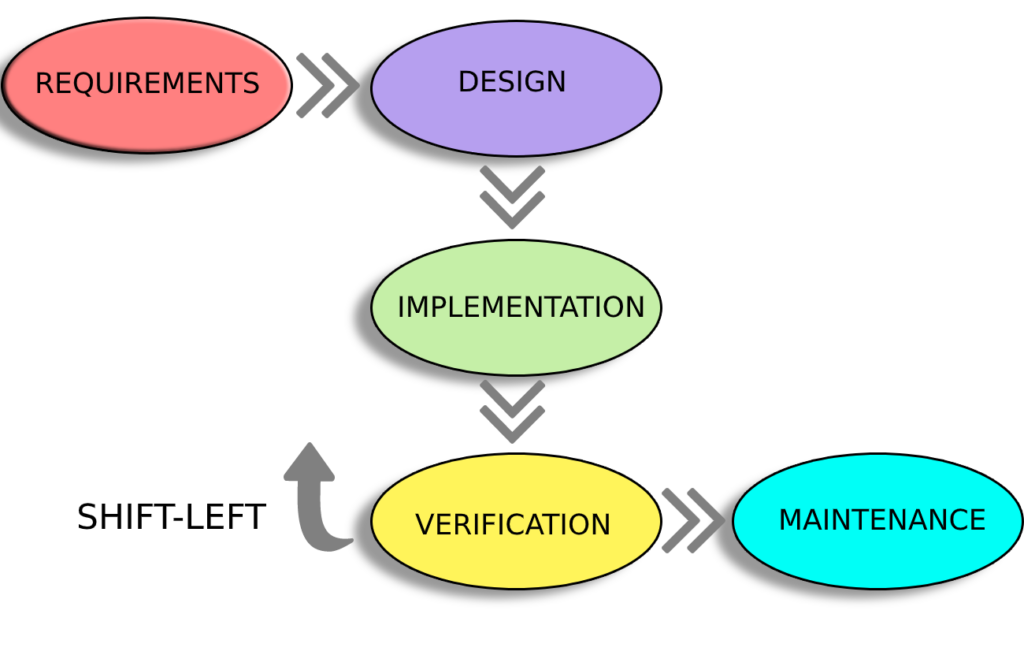
Every software company in today’s market is focused on becoming a leader in terms of how software solutions are provided to its customers. The main goal is to deliver a quality product. In order to test the quality of the product we need to follow some testing approaches like shift-left testing to implement them into our development lifecycle. In the past we had an approach called the Waterfall Model.

As you can see from the example, this SDLC approach is the earliest approach for software development and it consists of several sequential phases, meaning the next phase cannot start until the previous has finished successfully. That means that the Verification phase comes after the actual implementation of the product. In other words, software testing begins after the development of the software. If any bugs where to be found it would increase the risk of not releasing the product to its customers. Also, it would be very costly for the organization as a whole. New and improved testing approaches must be incorporated into the organization in order to satisfy customer requirements and to stabilize the SDLC process.
That’s why companies started to incorporate the Shift-Left Approach.
What does it mean?

Shift-left testing is the method of testing the software early in the development lifecycle. It is called shift-left because the testing phase is shifted on the left of the development process, meaning, testing is done at the beginning of the project and throughout all phases.
Why testing at the beginning when the software is not even done yet?
Well, testing as a discipline not only includes testing the software for bugs and reporting them back to the development team. It also includes analyzing the requirements from the customers, creating a test strategy, test plan, organize the resources needed for testing the software, etc.
Why shift-left testing?
We can detect defects early in the lifecycle so that they can’t become even bigger problems later in the stages. With this, we can increase efficiency, reduce defects, reduce time to fix them, and improve quality. Additionally, testing early and often, will increase the time needed to release the software and in turn, will win the competition in the market.
Advantages of shift-left approach
Incorporating this approach gives you the following advantages:
- Find defects earlier, fix them quickly
- Reducing time to fix the defects
- Increased product quality and efficiency
- Stabilization in the SDLC process
- Greater test coverage
- Lower development cost
Automation testing is a great idea in the shift-left approach. Testers and developers can automate the testing using automation tools across all the stages in the SDLC process. This allows catching bugs early, covering more scenarios, and maintaining the stability of the software.
Disadvantages of shift-left approach
Today, every member of the organization is responsible for the quality of the product. And it requires a big effort from all the teams (not just testing team) to make sure that the quality is satisfied. This is something that is not easy to implement since most of the organizations today are based on the traditional approaches and the time needed to transition to the shift-left approach can become quite a complex process.
The disadvantages of this approach includes:
- Approach not so easy to implement
- Requires all developers to put an accent on testing as well, which cause a bit of an overhead
Conclusion
In general, the goal of this approach is to help organizations deliver more quality products overall. Today more and more companies tend to follow this approach to ease the testing process. Although it is challenging to fully incorporate it into the organization. So make sure you have everything in place, from developers and testers side by side and sharing ownerships to responsibility and team effort.
Share this post











